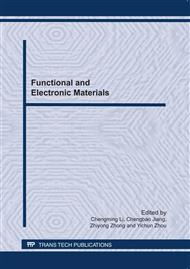p.625
p.634
p.641
p.647
p.651
p.658
p.662
p.667
p.673
Fretting Wear and Microstructure of Plasma Carburized TiAl Alloy
Abstract:
A carburized layer is fabricated in the surface of TiAl alloy using plasma carburization at 975 °C. Fretting wear test at ambient temperature was carried out to evaluate wear resistance of carburized TiAl. Glow discharge spectrum, X-ray diffraction and scanning electron microscopy equipped with energy dispersive spectrometry were used to characterize the microstructure of carburized TiAl and its property capability. The experimental results show that the carburized layer with about 5 μm in thickness is mainly composed of Ti2AlC and possesses better fretting wear resistances at ambient temperature. Precipitation of carbides in surface layer leads to a higher surface hardness and compressive stress, causing a surface strengthening of TiAl. Strengthening mechanism of carburized TiAl is also considered in this investigation.
Info:
Periodical:
Pages:
651-657
Citation:
Online since:
June 2011
Authors:
Keywords:
Price:
Сopyright:
© 2011 Trans Tech Publications Ltd. All Rights Reserved
Share:
Citation:


